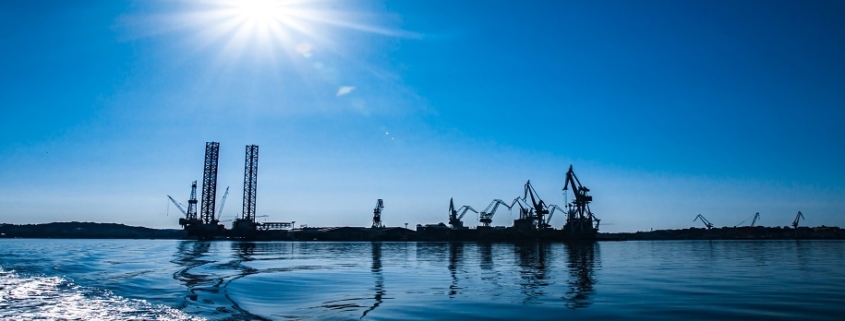The end game for Croatia’s shipyards?
In the local press there has been consternation that the government will pay out up to HRK4.5bn on account of government guarantees provided to two partly state-owned shipyards in Pula and Rijeka, which find themselves in serious financial straits. In some reports, this has morphed into an argument that the government will simply save the shipyards by putting up the money with no questions asked. That is because, in the past this is precisely what has happened – promises of restructuring and better management have been followed by injections of cash, only for the problems to return. Although the politically easiest way out, and one pursued in the past to the tune of over HRK30bn in aggregate support for Croatia’s shipyards since independence, this time is likely to be different.
The European Commission approved EUR96mn in support for the shipyards in early 2018 and once the shipyards in question could not pay out salaries for July and August, another government guarantee enabled them to borrow money from a state-owned bank to do so. Now, salaries for September are late, because there is no money to pay them. For those shipbuilding contracts still in force, customers are paying suppliers directly to ensure materials are procured on time. These two shipyards are on their last legs and the likelihood of a private investor genuinely being interested, on an as is basis, is minimal.
Certainly, the employees, who own slightly less than half of the shares don’t see that they should be putting up fresh capital – they are appealing to the government to bail them out. Other private shareholders are also keeping quiet, which is completely understandable.
Shipbuilding in Croatia began in the Austro-Hungarian Empire when important shipyards such as Uljanik in Pula and 3. Maj in Rijeka were founded. However, their genuine development began after World War II as the trend of migrating lower valued added production from West to East accelerated in activities such as textiles.
In this development, the role of the Soviet Union (USSR), although frequently left out of the narrative, was very important. Their approach was to maintain the construction of naval/military ships in the USSR, farm out the construction of its merchant fleet to East German and Yugoslav shipyards and its fishing fleet to Poland. This was a strategic partnership. Payment was in kind (which is the origin, in the immediate aftermath of the fall of the Berlin Wall, of the kliring debt in the balance of payments and foreign debt statistics of Eastern European states). As building ships for the Soviets in return for goods was strategically important, productivity, use of best available technology and financial metrics were far from central planners’ minds. Goals such as employment maximisation, the use of as many domestic resources (if you are being paid in kind, how and why would you finance the purchase of modern western components?) such as building your own motors etc. were more important while modernisation necessarily implied conflict with workers. Is it any wonder that even today, cheerleaders for Croatian shipbuilding never mention the financial viability of current (or past) production capabilities, focussing instead on physical production indicators such as tonnage and awards for quality (irrespective of the financial losses incurred: it is only right that anyone receiving such as ship without having to pay the full price, which is effectively what happened, gives you an award!)? That is the legacy with which Croatia’s shipyards entered the brave new world of a global shipbuilding market in 1990. When the Berlin Wall fell, a very important customer disappeared and given the legacy of an anything but financially viable approach to shipbuilding, it was illusory to expect that a state-owned shipbuilding industry would become financially viable on the global market without serious restructuring.
The productive capacities of Croatia’s shipyards employ far from best available technology. To get there, someone would have to be willing to invest hundreds of millions of euros. For that to make sense, that white knight investor would have to be certain that she will cover her cost of finance and earn a return on the invested capital in an acceptable amount of time. Without that type of investment, given the substandard state of production capacities, the shipyards will continue to bleed cash (how much more evidence do you need that they are doing so, if they have essentially had no money this year to pay out salaries?).
At the beginning of this text, I mentioned that part of the media coverage of this saga worries that the shipyards will again get a subsidy without anything changing – a potential investor, well aware of what has transpired over the past 30-odd years, will also be asking herself why she should invest if she can’t control costs, influence the production process and allocate the resources she is expected to finance in an optimal way? That is why the minister of economy was right when he said in September that the current model of shipbuilding has run its course.
In 2018, where the value of Croatia’s merchandise exports exceeds that of its services, the logic, sustainability and incentives of business demand a focus on financial returns to enable continuous investment and adjustment to market opportunities. Talk of the death of suppliers if these two shipyards go under is also too dramatic – it is not as if they are not aware the shipyards are in serious problems. Also, this is a global industry and if Croatia’s merchandise exports since EU accession have risen over 30% because of better access to the world’s largest single market in goods, then what better time than now to establish new business links? And a number of erstwhile employees at both the Rijeka and Pula shipyards have been snapped by foreign shipbuilders operating with offices in Croatia; based locally, their skills are being deployed globally.
The European Commission will play an important role in resolving this conundrum, as it did prior to EU entry, when it agreed a 5-year adjustment programme for the industry. Whether this sees significantly reduced production capacities or the end of these two shipyards, the government has a chance to resolve a legacy issue in the Croatian economy, ensuring it generates no more periodic hits to budget expenditures. More importantly, this and future governments would be in a position to focus their energies on resolving other policy issues. Last but not least, at least two pieces of prime real estate in Rijeka and Pula would be given a chance to contribute effectively to the development of the local economy.
While we can all empathise with the employees directly affected, the fact remains that a few thousand people will be receiving at least 0.6 percentage points of GDP in support from taxpayers to no great howls of complaint. Rather than leaving a piece of faeces on St Mark’s Square at the Government’s offices, as they did the last time they protested, for not being paid because the company they own most shares in cannot pay them, those protesting workers and the rest of us might want to reflect how a policy of supporting a few thousand workers out of over 1.1million with a 0.6 percentage point injection of GDP may be influencing many people to seek opportunities abroad even as labour shortages abound.

